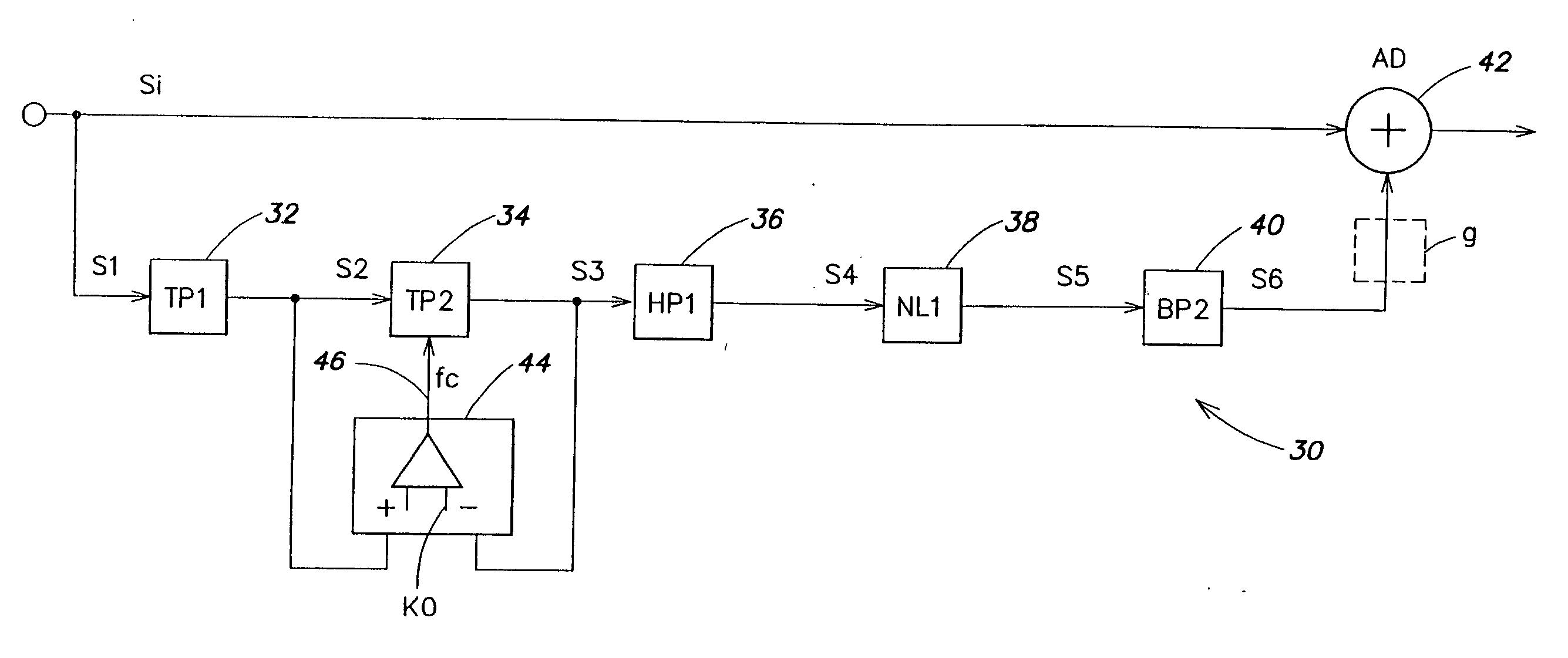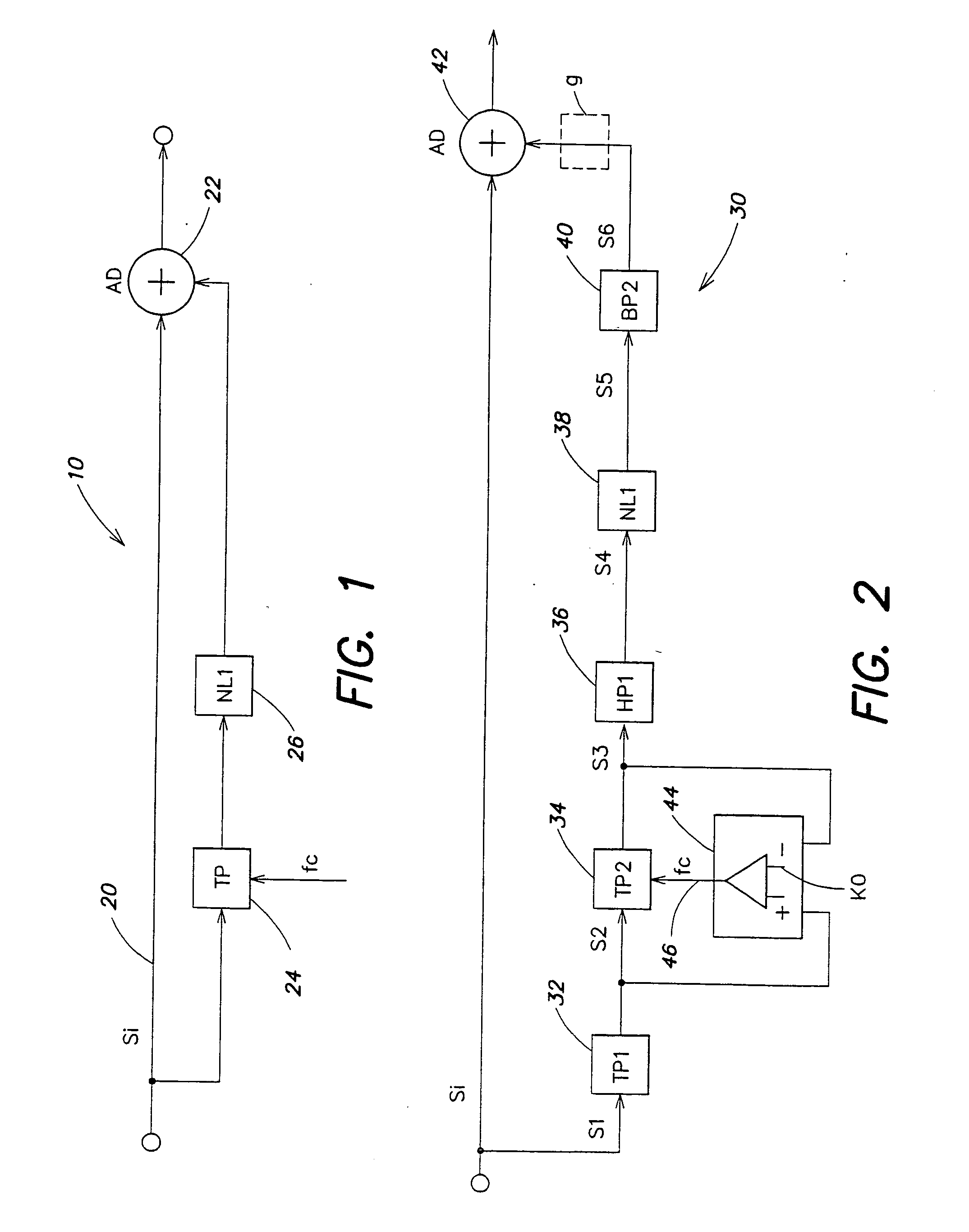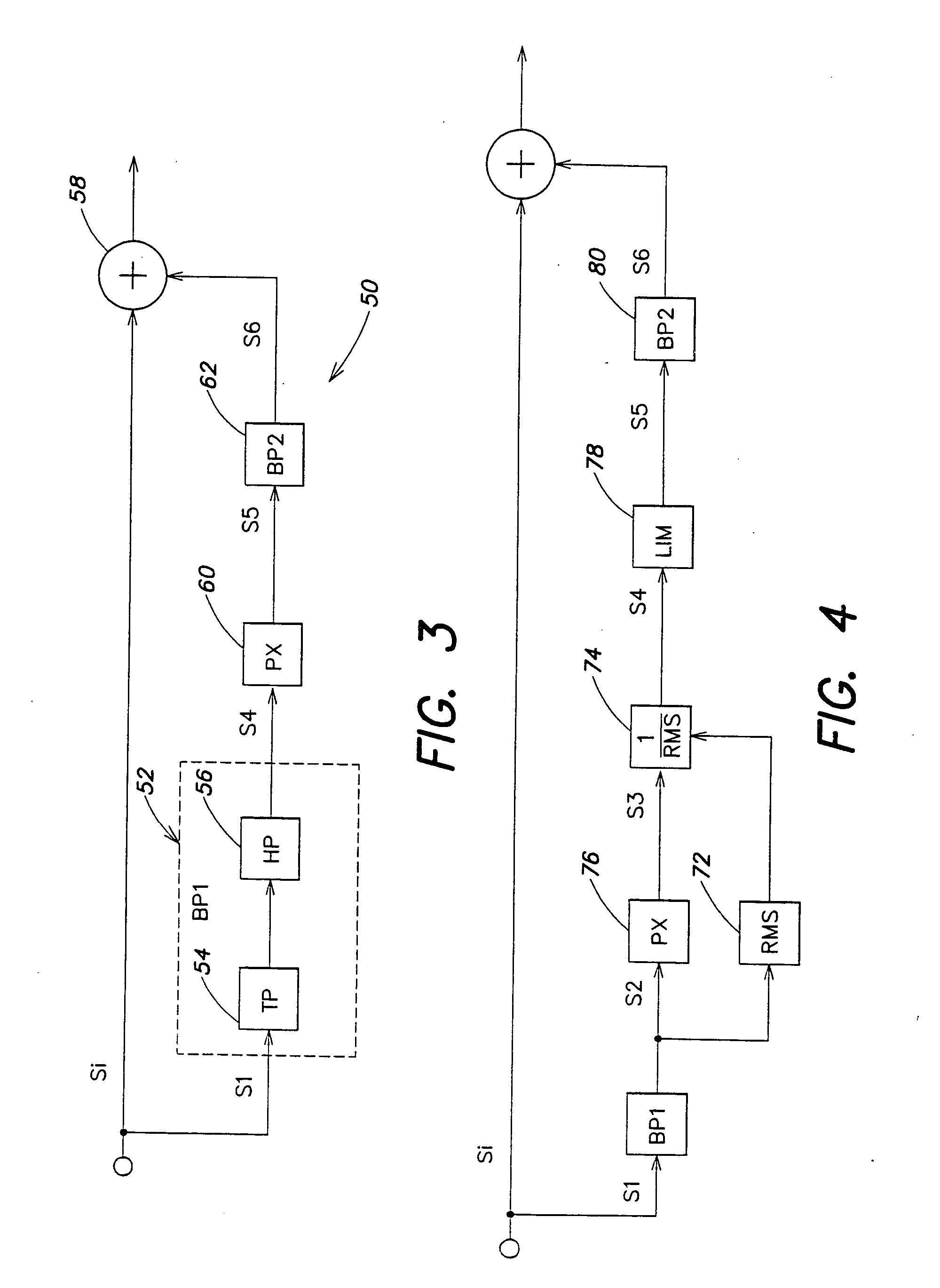Apparatus for generating harmonics in an audio signal
a technology of audio signal and harmonics, applied in the direction of automatic tone/bandwidth control, tone control, transducer casing/cabinet/support, etc., can solve the problem of overdrive of final amplifier and loudspeaker, muddy tone finally radiated by the loudspeaker, and more expensive production costs. achieve the effect of improving the audio impression for a listener
- Summary
- Abstract
- Description
- Claims
- Application Information
AI Technical Summary
Benefits of technology
Problems solved by technology
Method used
Image
Examples
Embodiment Construction
[0023]FIG. 1 illustrates a circuit arrangement 10, in which an audio input signal si on a line 20 is conducted to the input terminal of an adder stage 22. The output of the adder stage 22 is connected for example to a loudspeaker or to an amplifier (not shown). The input signal si is also conducted via a filter device, here a low-pass filter 24 or a band-pass filter, to a nonlinear circuit unit 26, which generates harmonics from the filtered signal. The filter arrangement is used to determine the dominating fundamental frequency in the input signal si on the line 20. From this, the nonlinear circuit 26 generates harmonics and conducts these to a second input terminal of the adder stage 22. It is essential that the corner frequency fc of the filter 24 is adjustable.
[0024]FIG. 2 illustrates a somewhat more detailed circuit embodiment than FIG. 1 for generating harmonics in an audio signal. The filter includes a series circuit of a first low-pass filter 32, a following second low-pass...
PUM
 Login to View More
Login to View More Abstract
Description
Claims
Application Information
 Login to View More
Login to View More - R&D
- Intellectual Property
- Life Sciences
- Materials
- Tech Scout
- Unparalleled Data Quality
- Higher Quality Content
- 60% Fewer Hallucinations
Browse by: Latest US Patents, China's latest patents, Technical Efficacy Thesaurus, Application Domain, Technology Topic, Popular Technical Reports.
© 2025 PatSnap. All rights reserved.Legal|Privacy policy|Modern Slavery Act Transparency Statement|Sitemap|About US| Contact US: help@patsnap.com



